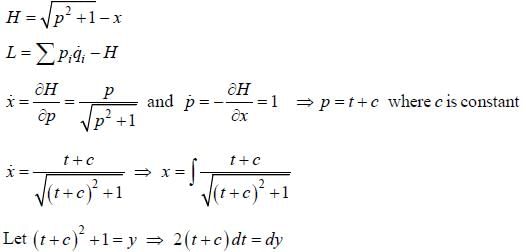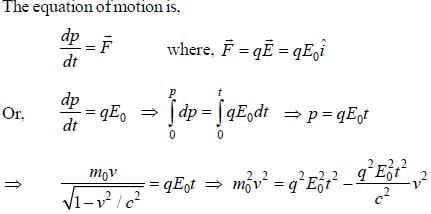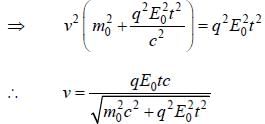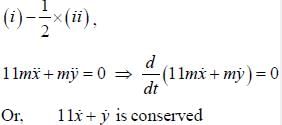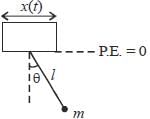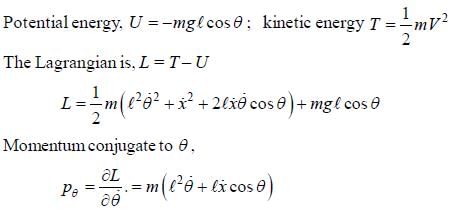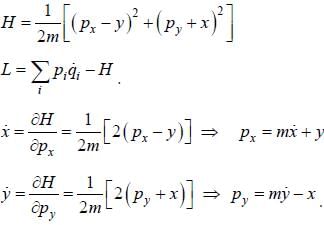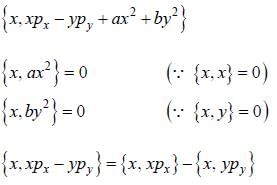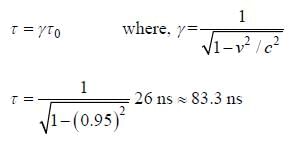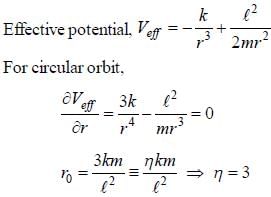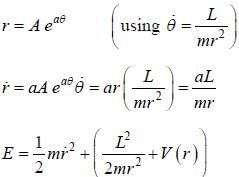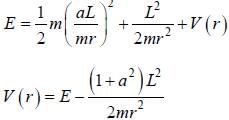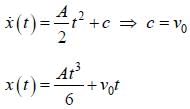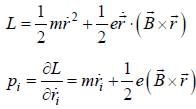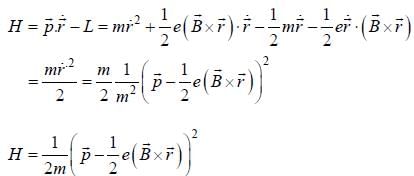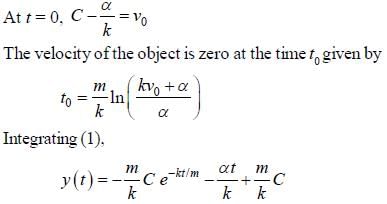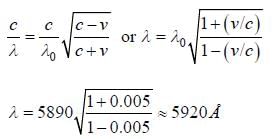Test: Classical Mechanics - 2 - Physics MCQ
20 Questions MCQ Test - Test: Classical Mechanics - 2
For a system with one degree of freedom, hamiltonian is  The shape of x-t graph for the particle is
The shape of x-t graph for the particle is
 The shape of x-t graph for the particle is
The shape of x-t graph for the particle isA particle of charge q and rest mass m0 is kept at rest at the origin. A constant uniform electric field,  starts acting on it at t = 0. The speed of the particle at time t is (in the following c is speed of light)
starts acting on it at t = 0. The speed of the particle at time t is (in the following c is speed of light)
 starts acting on it at t = 0. The speed of the particle at time t is (in the following c is speed of light)
starts acting on it at t = 0. The speed of the particle at time t is (in the following c is speed of light)| 1 Crore+ students have signed up on EduRev. Have you? Download the App |
The Lagrangian of a system is

Which one of the following is conserved?

Which one of the following is conserved?
A pendulum consists of a mass m and a massless stick of length l. The pendulum support oscillates horizontally with a position given by x (t) =  (see figure). The momentum conjugate to θ is
(see figure). The momentum conjugate to θ is

If the Hamiltonian of a system with two degrees of freedom is given by

then the quantity that is conserved is
The Poisson bracket  with a and b as constants is equal to
with a and b as constants is equal to
A particle of effective mass m is acted on by a potential energy given by

where, u0, a and b are positive constants, then
The number of degrees of freedom of two particles moving on a space curve and having constant distance between them, is ______.
The average lifetime of a π -meson in its own frame of reference is 26.011s. If the π - meson moves with speed 0.95c with respect to the earth, then the average distance it travels before decaying as measured byan observer at rest on Earth is approximately close to _______________________ meters (nearest integer)
A particle of mass m is subjected to a central force given by the potential  The radius of the circular orbit for a particle with angular momentum,
The radius of the circular orbit for a particle with angular momentum,  The value of η is ______.
The value of η is ______.
The path of a particle of mass m moving minder some potential V ( r ) is given by the r = A exp (aθ). where A and a are constants. The form of V(r) is (in the following L and E are angular momentum, and total energy, respectively)
A system with one degree of freedom has Lagrangian,  The equation of x(t) under the initial conditions t = 0, x = 0, p = mv0, is
The equation of x(t) under the initial conditions t = 0, x = 0, p = mv0, is
The dynamics of a particle moving on the real line is determined by the Hamiltonian

where μ and λ are constants. Then the value of dp/dq is
Hamiltonian of a one dimensional dynamical system is given by

The Poisson bracket {p, H} is equal to
For a charged particle of mass m and charge e in a magnetic field  the Lagrangian is
the Lagrangian is

The corresponding Hamiltonian is
Given that the linear transformation of a generalized coordinate q and corresponding momentum p,

is canonical, the value of the constant β is ______ (Here, i = √-1)
Two events in a inertial referance frame separated by a distance 3.6 x 108m and occur 2s apart. The proper time interval between the occurrence of these two events is _____ sec. (upto one decimal place)
The moment of inertia of a square frame of side length a and mass M about an axis passing through one of its
comers and perpendicular to its plane is βMa2. The value of β is________(upto two decimal places)
Ail object of mass m = 100 kg and volume V= 0.18 m3 is dropped from a height h = 100m above the surface of the water. Upon entering water (β= 1000 kg/m3 ), the object experiences a resistance force given by F = -kv. where k = 10N sec in. The maximum depth to which the object will sink before starting to rise again is _____ m. (Neglect air resistance and assume the object looses negligible energy when going through the surface of the water). (Nearest integer)
A star receding from the earth at a speed of 5 x 10-3c. The wavelength shift for the sodium D2 line is approximately equal to ____
is approximately equal to ____  (nearest integer)
(nearest integer)


